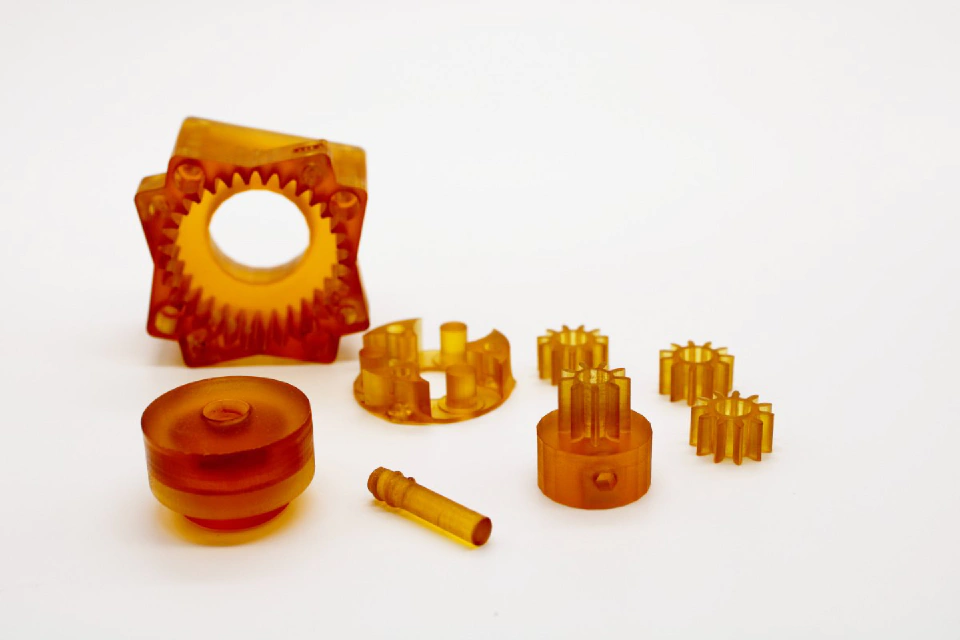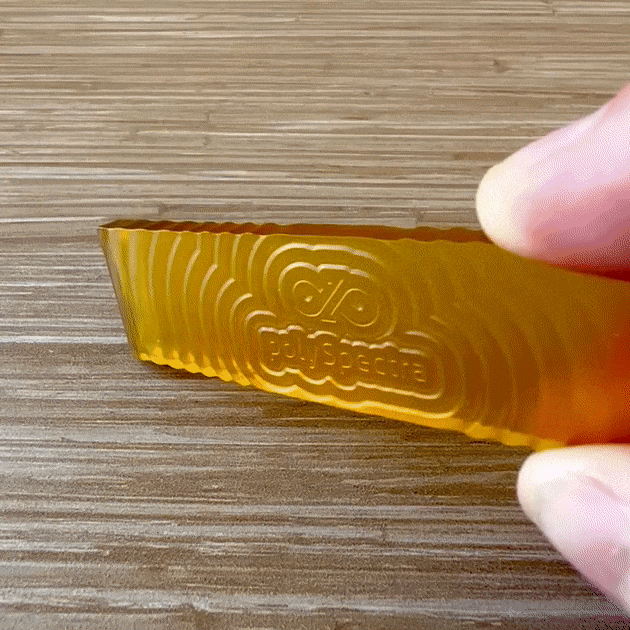Benefits of Photopolymers in 3D Printing
Additive manufacturing is a powerful technology that allows engineers to develop new product designs that meet increasing requirements. With 3D printing, manufacturers can access advanced materials that are unusable in traditional manufacturing processes.
Engineers can utilize a variety of materials to improve product performance. One of the most exciting materials engineers can use is photopolymers.
What are Photopolymers?
A photopolymer is a polymer whose properties change when exposed to light. Typically, in 3D printing, the light source is an ultraviolet (UV) ray. These UV lights initiate a reaction and change the photopolymer’s structure, thus modifying their chemical and mechanical properties. Engineers use photopolymers in a variety of 3D printing processes.
This material is widely used in 3D printing because photopolymers offer several advantages over other materials. For one, photopolymers are easy to use and have a low learning curve.
Photopolymers are also very versatile and can be used to create objects that adhere to a wide range of specifications, such as transparency, flexibility, and strength. Engineers can develop better products with more attractive features thanks to this innovative material. Let’s dive into some of the applications of this type of material.
Novel Applications Of Photopolymers
4D Printing
4D printing is a unique technology that creates objects that change shape or function over time in response to an external stimulus. This ability makes it possible to develop products that can adapt to their environment, which has a wide range of potential applications.
One example of 4D printing is the creation of shape-shifting structures. In one study, Fang and colleagues were able to create a 3D structure programmed to change shape in response to a solvent such as water. Engineers achieved this feat by photopolymerizing a bilayer of hydrophilic and hydrophobic materials.
The use of photopolymers in 4D printing is still in its early stages, but the potential applications are vast. However, available photocurable materials and printing technologies make it more challenging to create effective applications. Engineers use polyjet printing and extrusion printing for 4D printing, but polyjet printing has limited material choices, and extrusion-based printing has slow printing speed and relatively low resolution. More effective materials are needed for this application.
Photocurable Formulations with Enhanced Biocompatibility
3D bioprinting is a fascinating technology with great potential for applications in tissue engineering and regenerative medicine. However, the photocurable resins that are currently available for use in 3D bioprinting are mostly restricted to bioapplications due to their low biocompatibility, transparency, elasticity, and other features.
In order to overcome these limitations, engineers can use a new class of photocurable resins based on poly(ethylene glycol) (PEG) and other biocompatible polymers. These resins exhibit enhanced biocompatibility, transparency, and elasticity, making them ideal for use in 3D bioprinting applications.
In addition, engineers can functionalize these resins with a variety of biomolecules. Engineers can use them for a wide range of tissue engineering and regenerative medicine applications. In one study, engineers created PEGDA-based tablets with a controllable drug release profile. Developing further innovative materials will lead to more innovation.
Improving Physicochemical and Mechanical Properties
One of the main drawbacks of photopolymerization-based 3D printing systems is the brittleness of the final product due to the formation of inhomogeneous polymer networks with high cross-link densities. However, engineers can address this problem by carefully tuning the physicochemical and mechanical properties of the materials used for 3D printing.
For example, by using monomers with lower glass transition temperatures (Tg), it is possible to produce polymeric materials with better flexibility and impact resistance. In addition, adding fillers such as carbon nanotubes or graphene flakes can also improve the mechanical properties of the 3D printed materials.
Finally, it is also essential to control the curing conditions (such as exposure time, intensity, and wavelength of the light source) to achieve the desired properties in the final 3D printed product.
Let’s discuss some of the overall benefits of photopolymers in 3D printing now that we have seen some of the applications.
Benefits of Photopolymerization
While engineers have used photopolymerization in 2D printing technologies for some time, its widespread adoption in 3D printing is relatively new. However, several different photopolymerization-based 3D printing processes are already available, each with advantages and disadvantages.
One advantage of photopolymerization-based 3D printing is the ability to produce parts with a wide range of mechanical and optical properties. This ability is because the final properties of the part are determined by the choice of monomers and oligomers used in the photopolymerization process. Engineers can create complex multifunctional materials and have some control over various applications' final properties.
For example, it is possible to create soft and elastic parts like rubber or stiff and rigid like plastic. Likewise, engineers can control the transparency of the finished part by the choice of monomers used. This property makes photopolymerization-based 3D printing an attractive option for applications that require parts with specific mechanical or optical properties.
Engineers can use photopolymerization-based 3D printing to create parts with complex shapes. This process can build up layers of material that can be subsequently sculpted into the desired shape. Photopolymerization-based 3D printing is, therefore, an ideal choice for applications requiring complex shapes, such as medical implants or mechanical components with many moving parts.
PolySpectra COR Alpha
3D printing has come a long way in recent years and photopolymer resins have become increasingly popular for their ability to create high-quality prints with intricate detail. However, conventional photopolymer resins have been limited by both their lack of toughness and their lack of temperature stability.
PolySpectra developed the COR Alpha polymer to meet modern engineering needs. This engineering-grade material is designed for true production parts, with isotropic strength capabilities that make it ideal for advanced functionality. With traditional photopolymers, you often have to sacrifice functionality for durability. But with PolySpectra COR Alpha, you can have the best of both worlds.
PolySpectra COR Alpha has been thoroughly tested and approved for advanced engineering uses, making it the perfect choice for applications where durability and performance are critical.
In addition to its improved strength and stability, PolySpectra COR Alpha also offers enhanced chemical resistance. This means it can stand up to most organic solvents, salt water, and even jet fuel. And because it is made from biocompatible materials, PolySpectra COR Alpha can be autoclaved and sterilized without fear of warping or degradation.
Are you looking for more information on how you can utilize COR Alpha in your additive manufacturing processes? Polyspectra is more than happy to answer any questions you may have about this polymer. Get the TDS here.












